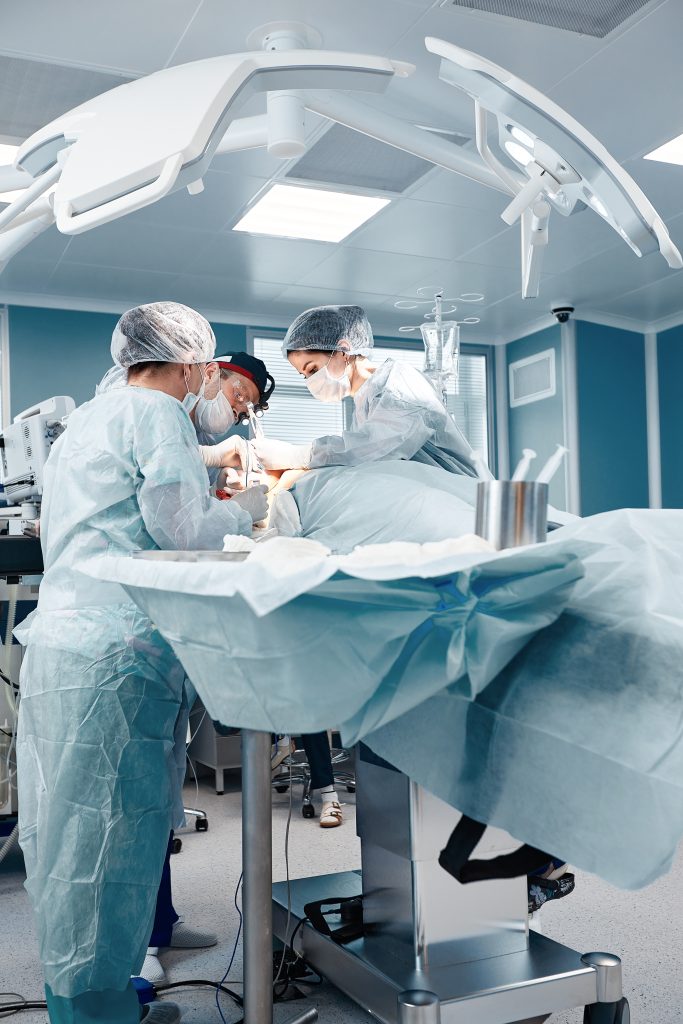What is septoplasty?
Septoplasty is a surgical procedure performed to correct a septum that is bent or deviated. This surgical intervention enhances nasal airflow and potentially improves breathing. Typically, septoplasty is performed on an outpatient basis, enabling patients to return home on the same day. Although swelling may persist for a period of two to three days, complete recovery may take up to three months.

What are the Causes of Deviation?
A person may be born with a facial asymmetry due to genetic factors, or they may experience it due to an injury during childhood. Even slight shifts in the nose as a result of childhood trauma may eventually lead to more noticeable differences as the person grows older. The nose typically continues to develop until the age of 18.
Who is a good candidate for septoplasty?
To address a deviated septum and improve breathing issues, a septoplasty might be required. Your doctor will have a conversation about potential treatment choices and determine whether undergoing this surgery is advisable.
Generally speaking, if you possess the following qualities, you may be suitable for septoplasty:
- Suffering from a deviated septum which leads to respiratory problems.
- Experience excessive snoring that can disturb your sleep or cause difficulty in getting restful sleep.
- Are physically healthy
- Are a nonsmoker
Preparation
Septoplasty frequently requires the administration of general anesthesia, whereby an anesthetist induces a state of unconsciousness in the patient for the duration of the procedure. Occasionally, surgeons may opt for local anesthesia and intravenous sedation as an alternative, but this decision will be communicated and deliberated with the patient prior to the surgery.
Similar to other surgeries where general anesthesia is used, individuals should refrain from eating, drinking, or even chewing gum after a specified time the night before the surgery.
In case it is needed, additional guidance on the timing and method of administering medications will be given by a physician or nurse.
In order to minimize the chances of excessive bleeding, the doctor will likely request that the individual refrain from using any oral medications that thin the blood for approximately one week prior to the surgery. If an individual is currently taking blood thinners or any other medications, it is advisable to have a conversation with the surgeon regarding these medications.
What happens during septoplasty?

Septoplasty is typically done as an outpatient procedure, allowing patients to return home on the same day of surgery. Generally, a medical professional will administer general anesthesia to induce sleep during the operation. Alternatively, local anesthesia that numbs the specific area to be operated on may be considered.
The process occurs fully within your nasal cavity. The surgeon makes a cut on one side of your nose and lifts the protective membrane called mucosa that covers the septum. This allows the surgeon to reshape the bone and cartilage of the septum. Occasionally, the surgeon will remove sections of the bone and cartilage, then alter and reposition the underlying structures of your nose. Afterwards, the mucosa is placed back over the septum. The nose is not fractured during the procedure. The surgery typically lasts 30 to 90 minutes.
Subsequently, the surgeon may place splints or soft packing inside your nose to secure the nasal tissue, prevent nosebleeds, and minimize the chance of scar formation. Typically, these splints stay in for a week. Alternatively, dissolvable stitches may be used by the surgeon, which will naturally disappear over time.
Recovering from a septoplasty
Septoplasty is generally done on an outpatient basis, unless there are serious complications. This implies that you can leave the hospital the same day as the procedure, after the effects of the anesthesia wear off. Your nose will be swollen, in pain, and filled with cotton to manage bleeding. The cotton can be taken out one or two days after the surgery. Furthermore, the doctor will prescribe painkillers as necessary.
In order to minimize the chance of bleeding complications following the procedure, your doctor will probably instruct you to steer clear of aspirin, ibuprofen, and similar blood-thinning medications.
To minimize swelling and promote healing, it is important to restrict your physical activity for a few weeks after undergoing surgery. This entails avoiding intense exercises like running, weightlifting, and playing contact sports, as they can raise your blood pressure and cause excessive bleeding.
Tips for a quicker recovery include:
- raising your head during sleep to reduce swelling.
- refraining from blowing your nose for a minimum of three days following the surgical procedure
- Choose shirts with buttons in the front to eliminate the need for pulling clothes over your head.

What outcomes can be anticipated after undergoing a septoplasty?
The advantages of undergoing a septoplasty are much greater than the potential dangers. Additionally, the majority of patients, specifically 85%, experience a noticeable enhancement in their ability to breathe through their nose.
Feeling fatigue and/or experiencing nausea right after the procedure due to the anesthesia is a common occurrence. But if you happen to feel any discomfort, make sure to notify your nurse promptly so that they can provide you with the necessary pain relief medication.
After the surgery ends, the majority of patients can leave the hospital after a few hours. It is common to have bleeding and congestion after the surgery, but it should improve within two weeks after the operation. Any sinusitis symptoms you have been having will probably persist until the infection is resolved.
There are possible side effects that you might encounter.
- Bruising around the eyes
- Swelling around the eyes
- Headaches
- Small burst blood vessels
There are potential issues that may arise during the procedure, such as a puncture or damage to the dividing wall between the nostrils, bleeding, infection, and negative response to the anesthesia. Nevertheless, these risks are relatively low, and the relief you will experience will make the temporary discomfort worthwhile.
Having Septoplasty in Turkey?
The patient must carefully search for an appropriate service provider, have information, and ask about the surgeon and his experience. And also, checking examples of his previous operations.
Accordingly, we encourage you to contact the Health & Beauty to obtain all information and details, and to ensure that you have your operation done by the hands of the most skilled doctors working in this specialty.
